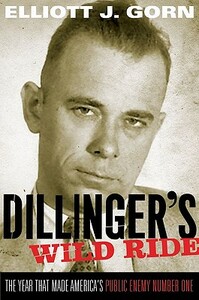Take a photo of a barcode or cover
3 reviews for:
Dillinger's Wild Ride: The Year That Made America's Public Enemy Number One
Elliott J. Gorn
3 reviews for:
Dillinger's Wild Ride: The Year That Made America's Public Enemy Number One
Elliott J. Gorn
Deconstructs the early 1930s social context of depression, rural foreclosures, prohibition, generational clashes, class warfare and media advances that made possible the large-scale romanticization of the Dillinger Gang, as well as the public relations counter-offensive managed by Hoover and Purvis. Like Bonnie and Clyde, the details of their exploits are hardly glamorous--most of the gang used the money from their first haul to go get dental work.
informative
reflective
medium-paced
As someone with a large interest in criminal history and "stars" of the underworld, this book was difficult for me to enjoy and get through. Very well researched and footnoted, however as a book it is extremely boring. On top of this the author has a borderline obsession with what the newspaper headlines said about a given situation. These headlines and discussion of said headlines make up roughly 60% of the book, and the descriptions of the events and/or continuing saga is constantly and painfully disrupted with them. Personally I bought the book to read about his saga and the events, not to read part of the event and then spend 3 pages hearing about what the New York Times thought about it or what this little paper thought about it, I frankly don't care.
By pg 30 I had grown tired of that game and so whenever a newspaper would come up I would skim until I saw that discussion was over. This saved me from wasting my time reading roughly 100 pgs of it.
By pg 30 I had grown tired of that game and so whenever a newspaper would come up I would skim until I saw that discussion was over. This saved me from wasting my time reading roughly 100 pgs of it.

